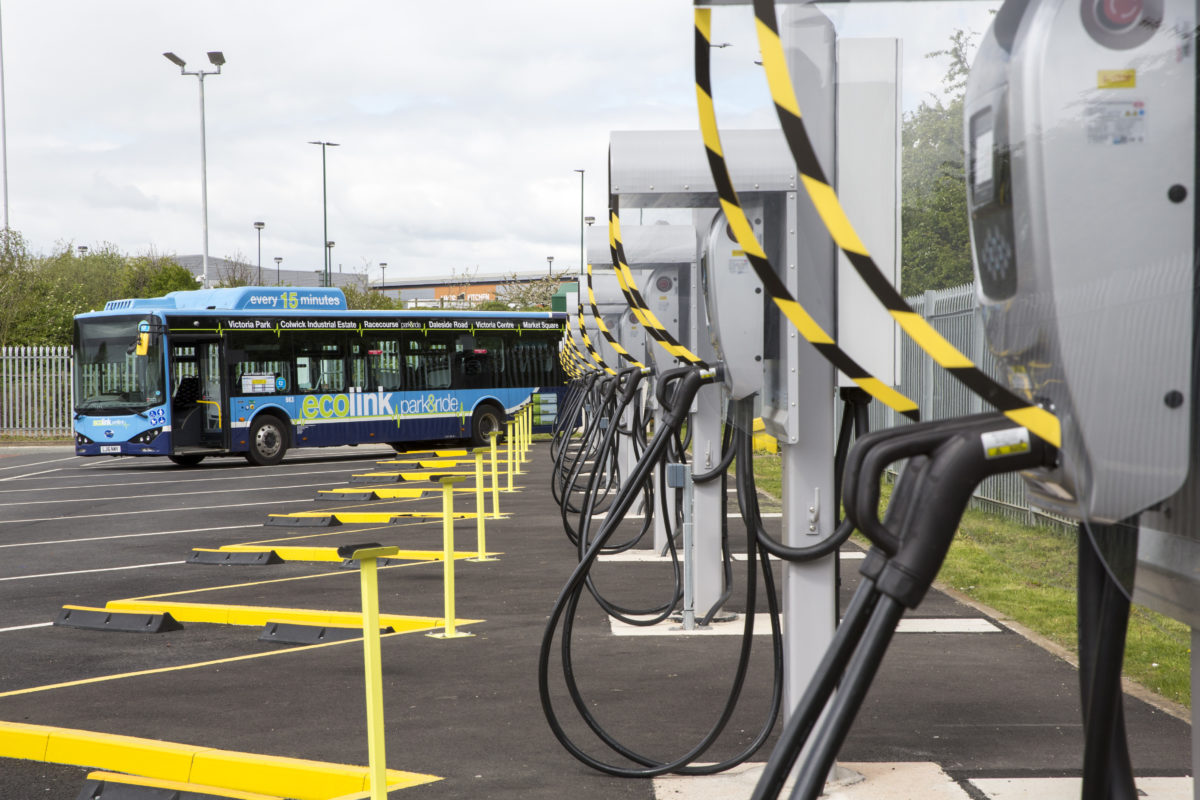
- Category:
- News
EU V2G project installs innovative energy technologies at City Council
Nottingham City Council will install repurposed EV batteries alongside other innovative energy technologies to lower emissions through the CleanMobilEnergy pilot project.
As one of the four city pilots in the Interreg NW Europe CleanMobilEnergy (CME) project, Nottingham City Council has committed to converting its Eastcroft Depot ready for the needs of a zero-carbon future.
This involves upgrading the electricity supply connection to the site making it fit for an electrified strategy and installing innovative technologies to support conversion of its operational vehicles to zero emission alternatives.
The innovative technologies include:
- 40 bi-directional vehicle-to-grid (V2G) chargers and 40 V2G capable fleet vehicles including cars, vans, trucks, road sweepers and refuse collection vehicles.
- a battery energy storage system (BESS) using re-purposed end-of-life EV batteries providing a total circa 600 kW/ 720 kWh of additional onsite storage capacity and flexibility, which arrived onsite last week.
- 138 kW of solar photovoltaic generation.
- a range of different smart charging systems matched to the demands of the different types of vehicles.
These systems will be controlled using intelligent energy management systems optimised to minimise carbon intensity and maximise economic value.
The overall system is monitored and further optimised with recommendations using the RE-Move tool developed by the CME consortium.
Matt Knight, Hardware Trials & Data Integration Lead, said: “This is an exciting milestone for CleanMobileEnergy and Nottingham City Council.
“Cenex and Cenex Nederland have supported Nottingham City Council in multiple ways for the five-year duration of the CME project on technical aspects of ultra-low emission vehicles and charging infrastructure.
“The experts working on the project have been modelling activities of energy requirements, provided technical support to procurement activities of the V2G and BESS systems, and conducted data analysis and reporting activities of the benefits that the scheme will yield for the city.
“We’re excited to see the impact of these technologies and hope to see more councils install similar systems in the future.”
Jorden van der Hoogt, Strategy and Innovation Lead, said: “With the increased adoption of renewable energy and electric mobility, the mismatch between supply and demand increases, straining the electricity grid.
“By developing an integrated Energy Management System called RE-Move, assets within the energy system are monitored and controlled where possible. At peak moments, the demand is being reduced, or surplus of (renewable) energy is stored in battery storage systems.
“Controlling all assets from a higher level has the potential to maximise the use of renewable energy and reduce the need for expensive grid reinforcements.”